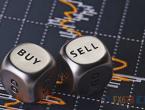EUR/USD
1.17561
0.090%
Gold
4378.61
1.381%
Oil
57.590
0.279%
USD/JPY
156.832
0.103%
GBP/USD
1.34791
0.044%
GBP/JPY
211.400
0.161%
Petronas, the Malaysian national oil company, has set the official selling price for Malaysian crude oil (MCO) in December at US$69.53 per barrel.Jefferies raised its target price for Baidu (BIDU.O) from $159 to $181.On January 2nd, Ministry of National Defense spokesperson Zhang Xiaogang, in response to a reporters question regarding overseas hype surrounding the "Justice Mission-2025" exercise, stated that Taiwan is an inseparable part of Chinas territory, and the Taiwan issue is purely Chinas internal affair, brooking no external interference. The Peoples Liberation Armys (PLA) anti-separatist and anti-interference operations around Taiwan are entirely legitimate, necessary, and beyond reproach. The biggest reality in the Taiwan Strait is that both sides belong to one China, and the greatest threat to peace and stability in the Taiwan Strait is "Taiwan independence" separatist activities and the connivance and support of external forces. We urge relevant countries and institutions to strictly adhere to the one-China principle, cease their connivance and support for "Taiwan independence" forces, and stop stirring up trouble on the Taiwan Strait issue. We hope that the vast majority of Taiwan compatriots will truly recognize the extreme danger and harmfulness of Lai Ching-tes "Taiwan independence" provocations, prevent being deceived and coerced by "Taiwan independence" forces, and earnestly safeguard their own security and well-being and the fundamental interests of the Chinese nation. The Chinese Peoples Liberation Army will continue to strengthen its training and preparedness, be ready at any time to counter provocative acts seeking "independence," resolutely thwart all attempts at external interference, and defend national sovereignty, unity, and territorial integrity.January 2nd - With US stocks closed for a holiday, Hong Kong stocks opened today, the first trading day of 2026. Driven by tech stocks, the market continued its upward trend, with gains exceeding 500 points. The Hang Seng Index opened 86 points higher at 25717, and subsequently, with strong buying pressure, broke through the 26000 mark, reaching a high of 26217, a gain of 586 points, and surpassing the 100-day moving average. At the close, the Hang Seng Index rose 2.18% in the morning session, while the Tech Index rose 3.38%. The total turnover of the Hang Seng Index market was HK$76.87 billion. On the sector front, tech stocks led the gains, semiconductor stocks rose for the first time in a week, and retail, power equipment, and gaming software stocks strengthened again. Biopharmaceuticals and cosmetics stocks continued their weakness, while film, heavy machinery, and food stocks experienced a pullback. In terms of individual stocks, Biren Technology (06082.HK) surged over 72% on its first day of trading, Hua Hong Semiconductor (01347.HK) rose nearly 10%, Baidu (09888.HK) rose 7.5%, Kingdee International (00268.HK) rose over 6%, and CK Infrastructure Holdings (01038.HK) fell 1.1%.New York silver futures broke through $73 per ounce, up 3.40% on the day.











